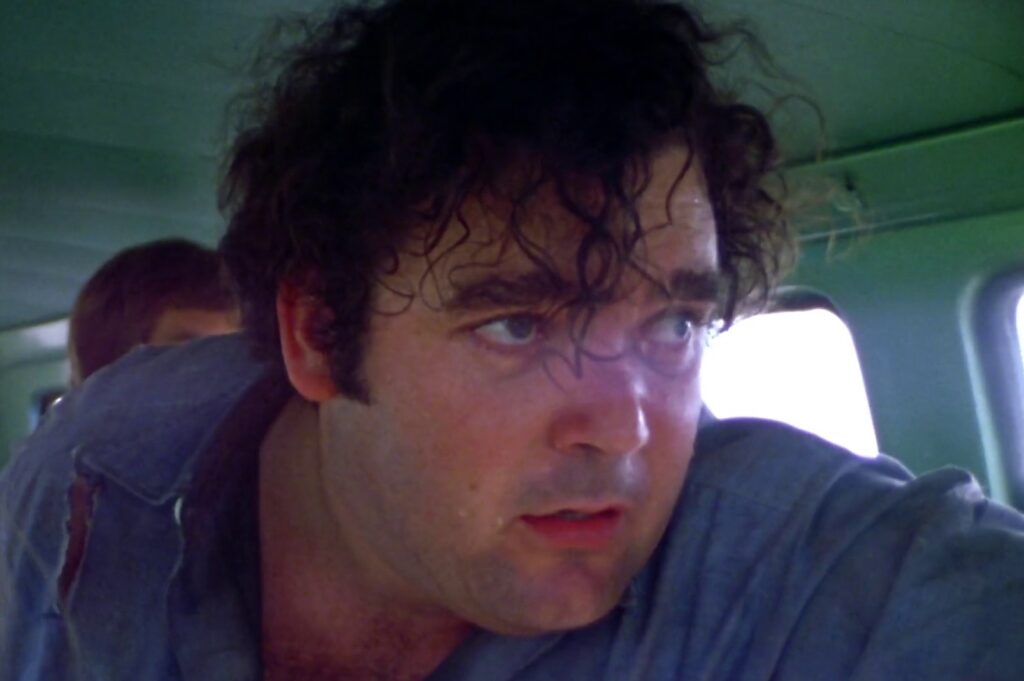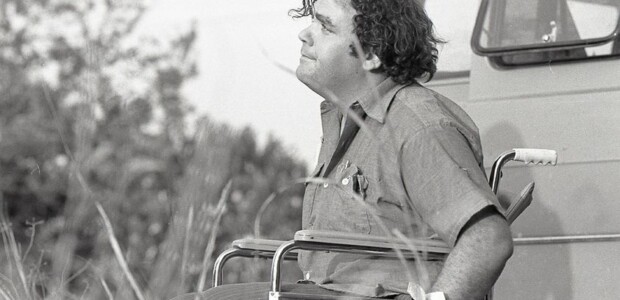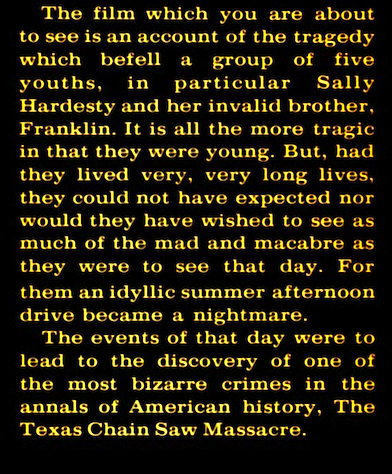Most characters don’t make it out alive in horror movies. Some survive until the final reel if they’re lucky, while others become bodies on the slab before the titles have even run! They are sacrifices for us bloodthirsty fans, but there’s more to them than that. They have wants never met. Stories never properly finished. In Always the Final Kill, Never the Final Girl, writer Matt Konopka digs up these poor souls lost under the shadow of heroes to give them the proper attention they deserve.
The article which you are about to read is an account of the tragedy which befell one of horror’s most over-hated characters, THE TEXAS CHAIN SAW MASSACRE’s Franklin (Paul A. Partain).
With the holiday season just behind us, I’ve found myself thinking a lot about family. The good. The bad. The madness of it. A commitment bound by blood to people we never chose. I always felt like an outcast within my own home. The only one of my Midwestern brethren who didn’t like to hunt. The weirdo who loved horror. The classic Black Sheep. There’s a pain in not belonging that cuts like a serrated edge. No one wants to be the spoiled meat of the household. Which is why I never understood the utter hatred for Franklin in Tobe Hooper’s TEXAS CHAIN SAW.

Ask anyone who they think wears the blood-spattered crown of horror’s most obnoxious characters and odds are you’ll hear Franklin’s name uttered with disdain more than a few times. I’m not here to shame anyone like that woman in GAME OF THRONES, trailing behind you with a ringing bell. I get it. The disabled younger brother of the film’s much more beloved heroine, Sally (Marilyn Burns) isn’t exactly a bundle of joy to be around. He’s whiny. He’s strange. His rants on the techniques of slaughterhouses are nauseating. But have you ever stopped to consider why he is the way he is?
Our introduction to Franklin and crew sees their van pull over on the side of the road. Kirk (William Vail) makes a ramp by the door for him to exit and unload his bladder. From within the van, Sally and the others watch with a seasoned blend of curiosity and annoyance. Then a blaring truck blows past, sending the poor guy falling down the hill. In this instance, we understand that the others see this much-maligned individual as an inconvenience. His sister, Sally — the one you’d expect to help him — isn’t. For her, he’s no different than a bothersome fly feasting on roadkill.

Most of you reading this know that Hooper’s film is marinated in themes of the Vietnam War and a broken America on the verge of eating itself. Franklin reminds me of those veterans who returned in disrepair. People in need of help from a society unwilling to offer it. Including their own families. Before “the saw is family” was uttered in THE TEXAS CHAINSAW MASSACRE 2, the original had already ingrained provocations of kin through its brother and sister protagonists. Sally is our fighting Final Girl, but this story belongs to them both. Everything we see during the first half of Hooper’s film is viewed through Franklin’s desperate eyes. From the grotesque encounter with the Hitchhiker (Edwin Neal) to his urgency to get the hell out of Dodge, Franklin is our conduit for all of the pain, the terror, the misery which Hooper elicits. Usually, our Final Girl would be the one to sense the danger roaring towards them like a speeding semi. Not Sally.
Here’s a hot take for you, sizzling like a juicy hunk of barbequed meat fresh off the grill; Sally is the worst of this group. She’s as aloof as a Texas breeze, a symbol of the average white American oblivious to the pain of a nation… and the brother who needs her most. Before she’s our sole survivor, she might as well be background noise. That’s more or less how she treats Franklin. The whole purpose for the trip is to visit the grave of their grandfather, yet that’s where Sally leaves her poor brother alone in the van. She also abandons him downstairs at their old house, a dark, decrepit visualization of the decay spreading through American homes. “If I have any more fun today I don’t think I’m gonna be able to take it”, mutters Franklin with tears in his eyes. He is Hooper’s comment on a generation abandoned by their families and friends alike.
Underneath the stitched flesh of TEXAS CHAIN SAW is an exploration of the veiny roots which tie Leatherface (Gunnar Hansen) and Franklin together. Both are outcasts. Each craves to be looked at like everyone else instead of writhing under the weight of curious stares. Despite his hulking size, the Old Man (Jim Siedow) beats the mask-wearing behemoth as if he were a child. CHAIN SAW encapsulates the rage of that abuse through the titan of terror’s weapon of choice, a screaming, messy tool that ravages everything in its path. Had Franklin lived long enough, he would’ve seen himself in that sad sack of beef we call Leatherface. Two souls pent up with a frustrated rage over the way in which everyone has left them behind.
Anger over that abandonment boils as hot as the sweltering sun throughout TEXAS CHAIN SAW. It’s in the sweat dribbling off the flesh of the cast. It’s in the painful screams and the roaring saws and the dead animals buzzing with flies. “It’s impossible” Sally screeches as she pushes Franklin through the dark forest. She’s given up on him. Leatherface bursting from the shadows, saw wailing, signifies the metaphorical rage of Franklin. He never asked to be a burden. Neither did the youth sent off to war only to come back in pieces. Sally’s ensuing madness comes from recognizing for the first time the cost of her mistreatment, the literal blood of it on her hands.
From beginning to end, the concept of family bites and tears and gnaws these doomed siblings to the bone. While Franklin struggles to embrace it, Sally does everything she can to run from it. CHAIN SAW’s fever dream of an ending embodies her true fear, a manifestation of that nausea some of us experience when we know we have to endure dinner with the relatives. Questionable food. Expectant looks. Grandpa giving everyone a headache with his rants about the Libs (in this case, an actual hammer to the head). Sally sees Franklin and the very concept of family as a hook in her back dragging her down into a basement of horror. The familial angst of our protagonists becomes incarnated and spread out around the table like a nightmarish feast. Dinner with Leatherface is only Sally’s just dessert in not being the sister Franklin needed her to be.
Shocker, I’m not a big fan of Sally. Marilyn Burns was a true icon and deserves her place amongst horror’s cherished Final Girls. But I do wish Paul A. Partain received similar recognition for his sympathetic portrayal of a character who just wanted someone, anyone, to care about him. Fans have been able to offer Leatherface their empathy over his tragic past, so why not Franklin? He was never CHAIN SAW’s annoying baggage. He’s always been part of the sauce that makes the taste of Hooper’s film resonate as much as it has for decades.
Tags: Columns, Gunnar Hansen, Horror, Marilyn Burns, Paul A. Partain, Tobe Hooper




No Comments